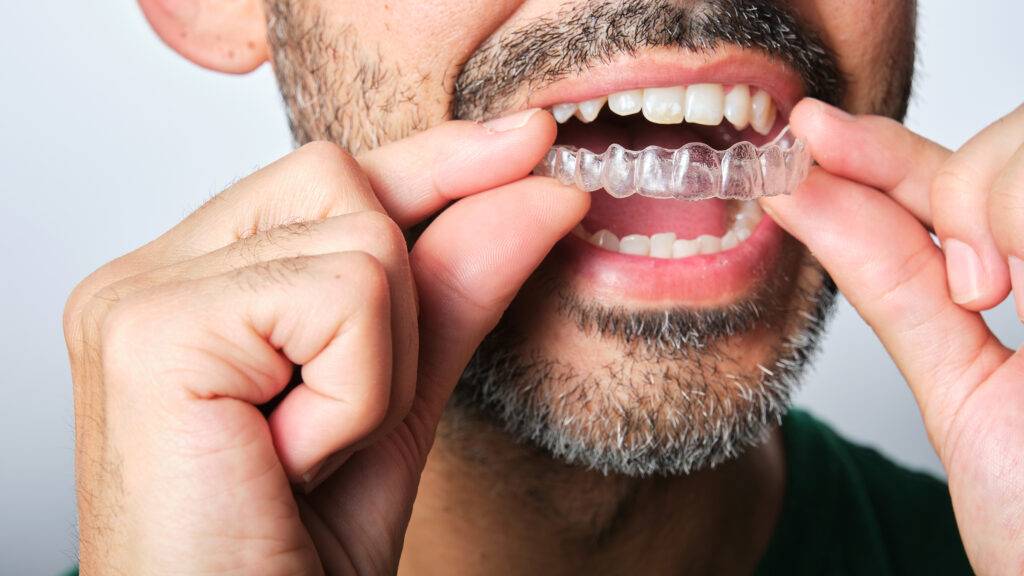Clear aligners have transformed the field of orthodontics, offering a discreet, comfortable, and convenient alternative to traditional braces. But before diving into the treatment, it’s important to determine if clear aligners are the right option for your specific dental needs.
Not everyone may be an ideal candidate for this treatment, and various factors can influence its effectiveness. Understanding these factors will help you make an informed decision about whether clear aligners are the right fit for your orthodontic journey.
One of the primary considerations when determining candidacy for clear aligners is the type and severity of your orthodontic issue. Clear aligners, such as ODONTO aligners, are highly effective for treating mild to moderate dental misalignments like crooked teeth, gaps between teeth, and minor bite issues.
However, complex or severe cases, such as extreme overbites, underbites, or jaw misalignments, may require more traditional methods like braces. This doesn’t mean clear aligners are out of reach, but in cases involving more significant structural corrections, orthodontists often recommend a combination of treatments.
Your oral health plays a pivotal role in whether you’re a good candidate for clear aligners. If you have active dental issues such as cavities, gum disease, or severe tooth decay, these will need to be addressed before starting clear aligner treatment.
The aligners require a healthy environment to work effectively, and any pre-existing dental problems could lead to complications or delays. Patients with strong, healthy gums and teeth are the best candidates for clear aligners, as they provide the optimal conditions for tooth movement.
Age is another factor that influences candidacy for clear aligners. While aligners are suitable for both adults and teens, children may not be the best candidates because their teeth and jaws are still developing.
Teenagers, especially those with nearly fully grown adult teeth, can benefit greatly from clear aligners as they provide the flexibility of removal during meals and sports activities. For adults, clear aligners are particularly attractive due to their aesthetic appeal—helping correct misalignments without the noticeable appearance of metal braces.
Commitment to the treatment is an essential part of determining whether clear aligners are a good fit. Unlike braces, which are fixed in place, clear aligners are removable. While this feature adds convenience, it also requires a high level of responsibility from the patient.
Aligners need to be worn for at least 20 to 22 hours per day to be effective, and removing them too often or forgetting to put them back on can significantly slow down or even reverse progress. Patients who are disciplined and can commit to wearing the aligners as instructed are more likely to see the best results.
A patient’s lifestyle also plays a role in their candidacy for clear aligners. Since aligners are removable, they need to be taken out during meals and when drinking anything other than water. This means you’ll need to be diligent about cleaning your teeth and the aligners before putting them back in.
If you have a lifestyle that allows you to brush after meals and keep up with proper oral hygiene, you are well-suited for aligner treatment. However, if you have a hectic routine that doesn’t allow for regular cleaning or care, aligners might not be the best option.
One of the most attractive aspects of clear aligners is that they are virtually invisible, making them ideal for people who are self-conscious about the appearance of traditional braces.
Professionals, adults in social settings, and teenagers looking to avoid the typical look of metal braces all benefit from the discreet nature of clear aligners. This factor is particularly important if you are considering orthodontic treatment but have reservations about how it might affect your self-image.
Clear aligners are also appealing for individuals who prioritize comfort. Unlike traditional braces, which involve metal brackets and wires that can irritate the mouth, aligners are smooth and custom-fitted to your teeth.
They gently and gradually shift your teeth into place, making the treatment process more comfortable overall. However, some individuals with sensitive teeth may experience discomfort in the initial stages, so it’s crucial to consult with your orthodontist to assess your pain tolerance.
Financial considerations are an important part of the decision-making process. While clear aligners can be cost-effective, they may require a larger upfront investment compared to traditional braces.
The overall cost depends on the length and complexity of the treatment. Many providers offer payment plans to help make the process more affordable. It’s advisable to consult with your orthodontic provider to discuss your options and determine whether clear aligners fit within your budget.
Finally, regular follow-up appointments are necessary to monitor your progress. With clear aligners, you’ll need to visit your orthodontist every few weeks to receive new trays and ensure your teeth are moving as planned.
Patients who can adhere to these appointments and maintain close communication with their orthodontist are more likely to see success with aligners.
In summary, clear aligners offer a fantastic, convenient solution for many people, but they aren’t for everyone. Ideal candidates have mild to moderate misalignments, good oral health, a commitment to wearing the aligners as directed, and the ability to maintain proper hygiene.
Clear aligners are a great choice for those looking for a more comfortable, nearly invisible treatment that fits seamlessly into their daily lives. By understanding these factors and working with your orthodontist, you can confidently decide whether clear aligners are the right choice for your smile transformation.


